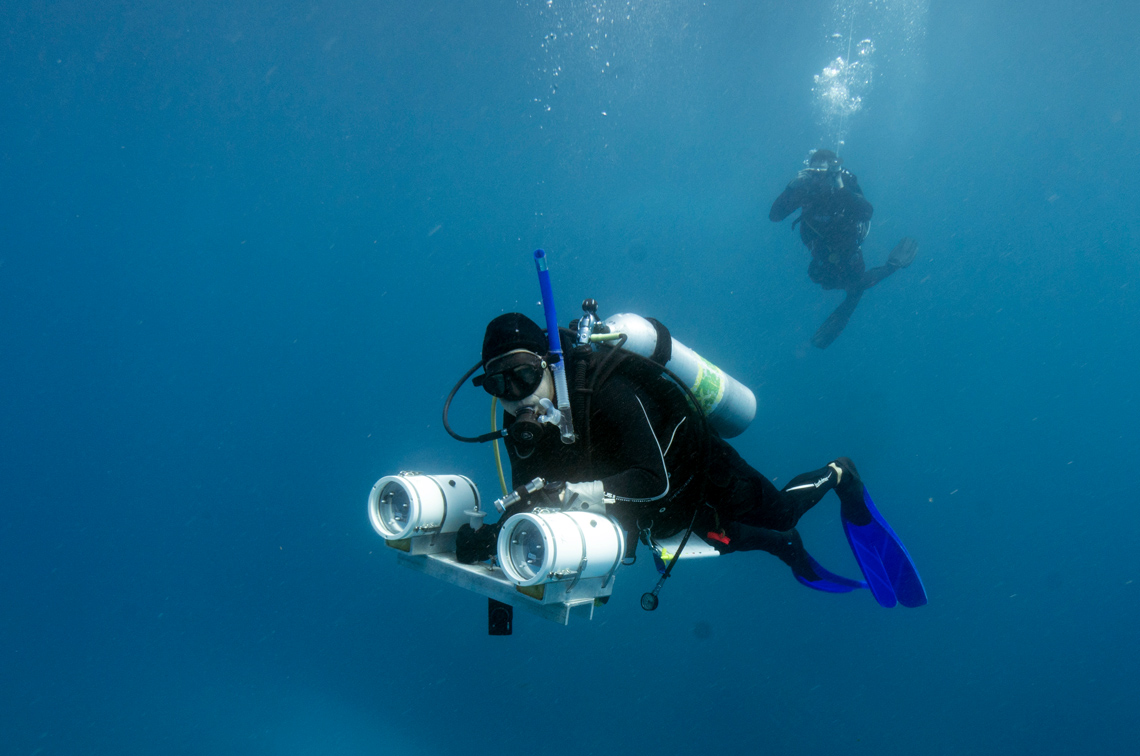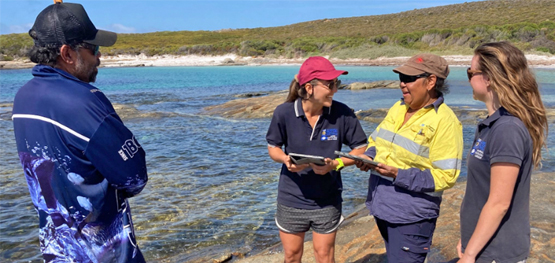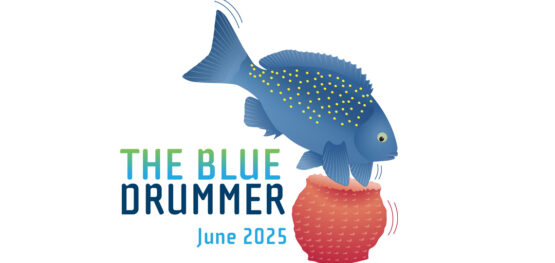Article
17 June 2025
Little Seal Rock lies south-east of Sugarloaf Point Lighthouse on the New South Wales mid-north coast, snug in the Seal Rocks Sanctuary Zone of Port Stephens-Great Lakes Marine Park.
It’s a go-to zone for scuba divers who descend to 12–18 metre depths and watch grey nurse sharks parade through rocky gutters. For some there’s an even rarer sight . . . the appearance of a large black rockcod.
This legendary fellow is estimated to be 50–70 years old. Divers first noticed him in 1988, and he may have sheltered here since his youth.
He can change colours to match his surroundings: dark in a cave, pale on the sand, banded grey and cream among corals. Predatory sharks may be tricked by this subterfuge, but a greater threat exists outside the sanctuary zone.
Giants and monsters
Declines in black rockcod abundance due to fishing pressure were reported as early as 1916.
From the early 1900s, newspapers along the NSW coast told tales of giants and monsters up to ‘eight feet long’ being reeled in for the fish markets. Black rockcod was ‘one of the best edible fish along the coast’ and ‘a voracious feeder that takes prawns, worms or fish bait without hesitation’.
In the 1950s to the late 1970s, black rockcod also was heavily spearfished along the NSW mainland coastline. Line and spear fishing eventually reduced black rockcod numbers to a level at which it became unusual to find large individuals where once they were common.
NSW Fisheries recognised black rockcod as being under threat and in 1983 the species was listed as Vulnerable in NSW waters. In 2012 it was also listed as Vulnerable in commonwealth waters. These protections mean that black rockcod must not be being taken from the wild and it is illegal to possess or harm them.
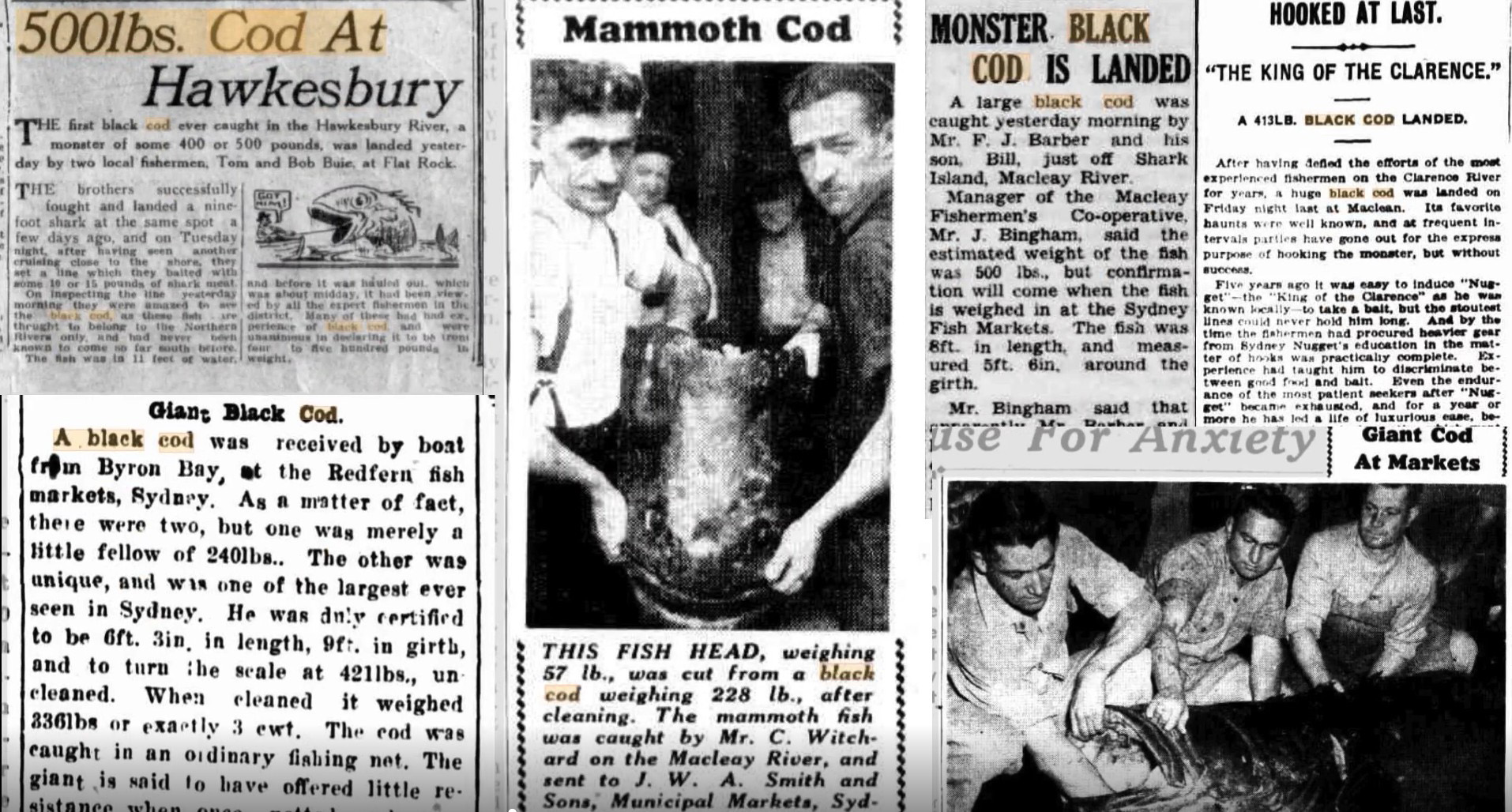
Broadscale surveys
Long-term monitoring of black rockcod numbers is essential to help evaluate the success of protection. It is identified as a high priority in the New South Wales Black rockcod recovery plan and by the NSW Fisheries Scientific Committee.
In 2009–2011 NSW Marine Park researchers conducted the first broadscale (baseline) black rockcod survey at 83 sites off northern NSW (Port Stephens to Cook Island) and at Lord Howe Island.
The survey was repeated for the first time in 2023 as part of a Marine and Coastal Hub project led by David Harasti and Hamish Malcolm of Fisheries Research – NSW Department of Primary Industries and Regional Development (DPIRD).
In scuba gear, they swim along each site for up to 45 minutes searching for and photographing any individual black rockcod. They record length, depth and habitat type for each fish.
In 2024, also as part of the hub project, they repeated a smaller-scale survey that has been conducted most years since 2009 at 19 key monitoring sites.
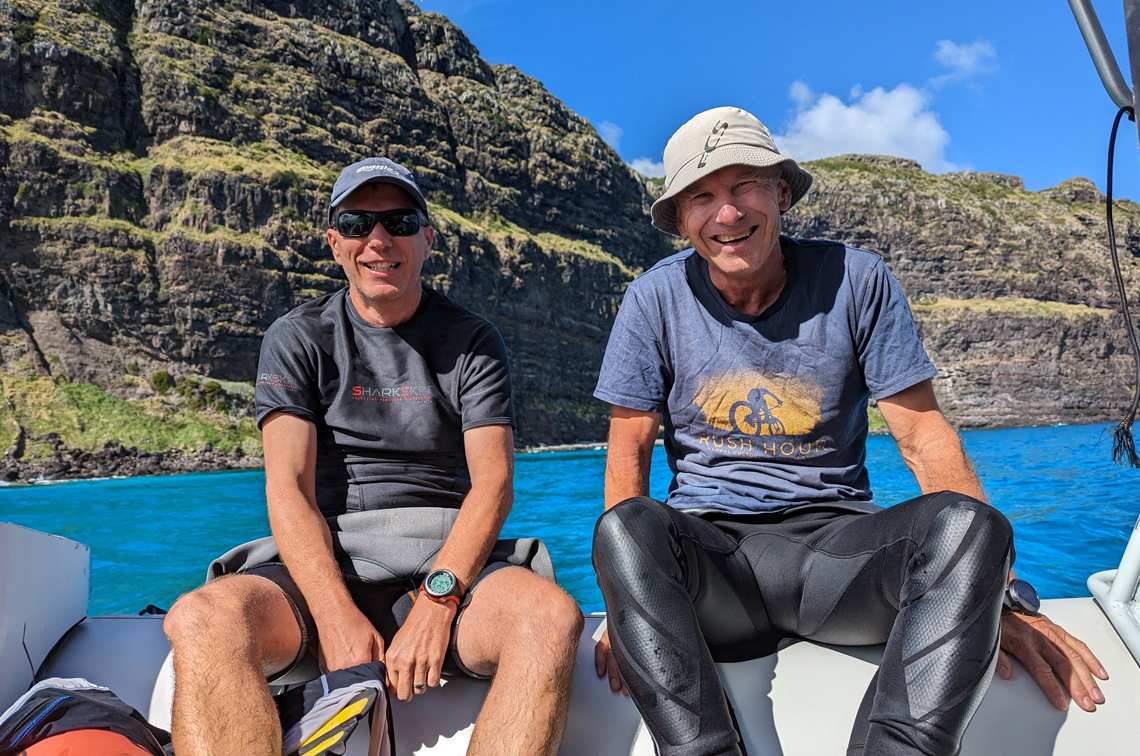
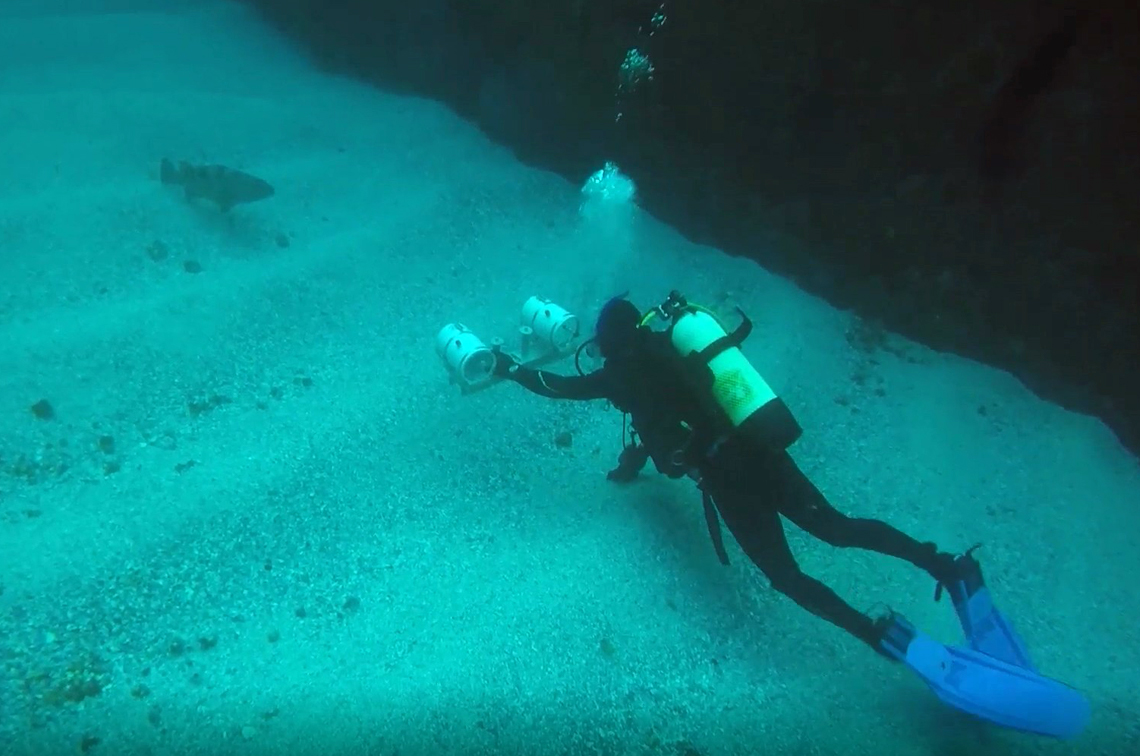
Vulnerable to fishing
“It’s a real privilege to see this iconic species, especially a big one, because they are so rare and threatened,” Dr Harasti says. “They have life history traits that make them extraordinarily vulnerable to fishing.”
These traits include the black rockcod being late to mature and long-lived. They grow slowly to a maximum length of 1.8 metres and can live to the age of 70. Females don’t become sexually mature until they reach about 70 cm in length and 12 years of age. They then change sex from female to male at about 105 cm in length and about 25 years of age. The distribution of this south-western Pacific endemic species is also restricted.
“They are a really shy elusive fish and very territorial. They find their happy place in a cave and stay in that unique spot,” Dr Harasti says. “They are restricted to shallow reef habitat at small steep islands and complex rocky reef systems. This combined with their narrow depth range (1–50 m) means they have only a small total area of suitable habitat.”
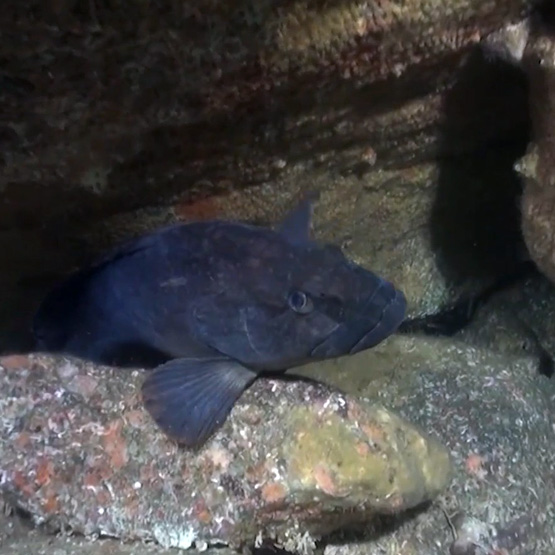

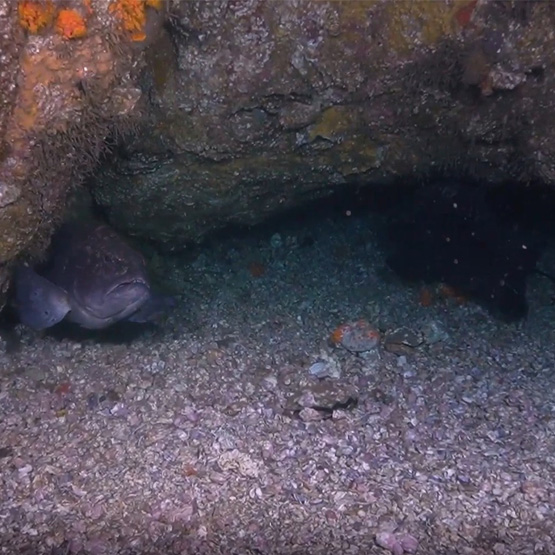
Little evidence of recovery
Although the black rockcod has been protected since 1983, data collected by this project shows little evidence of consistent recovery.
The repeat broadscale survey indicates the species is declining at several locations across its range. The more frequent surveys at 12 key monitoring sites during that period (and in 2024) recorded stable numbers until a noticeable decline in 2021. Numbers observed in 2023 and 2024, however, were greater than in 2021.
The 2009–2011 broadscale survey recorded 117 individuals, at 34 of the 83 survey sites. The 2023 survey recorded 66 individuals at 27 of the 83 sites. This equates to a 42% reduction in the relative abundance of black rock cod at these sites, and an 8% reduction in the proportion of sites at which black rock cod were observed (41% of sites reduced to 32%).
The declines are most evident at sites in the Port Stephens-Great Lakes Marine Park, Fish Rock at South-West Rocks and the Lord Howe Island Marine Park.
“When compared with observations by spearfishers and captures of black rockcod from the 1950s and 1960s, the 2023 and 2024 surveys indicate the species is a long way off recovering to abundances of more than 50 years ago,” Dr Harasti says.
Oral history records and historical photographs from Lord Howe Island also suggest black rockcod were considerably more abundant there in the mid-1900s.
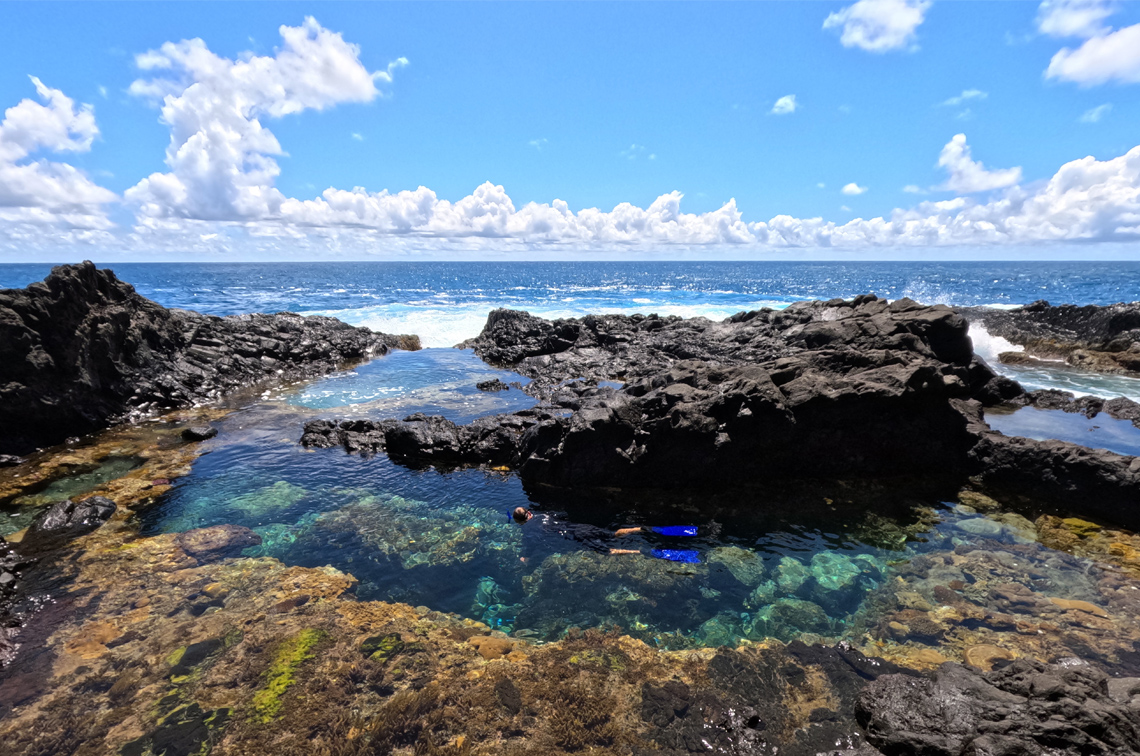
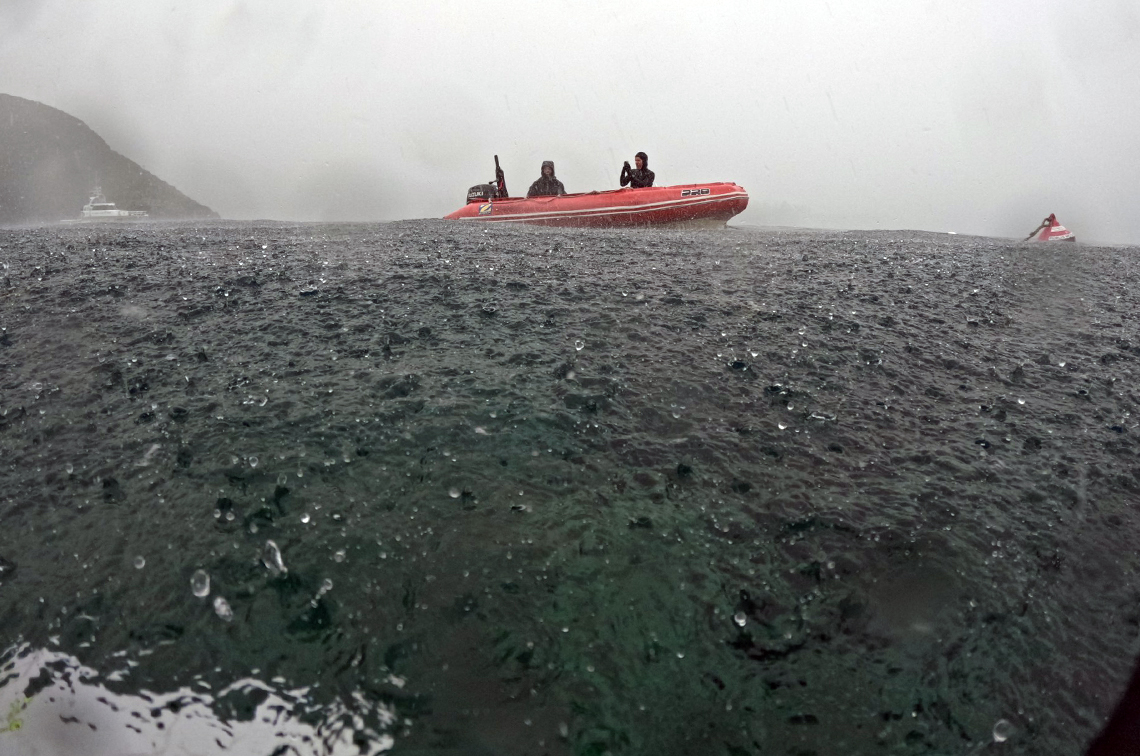
Some positive signs
One positive finding from the 2023 broadscale survey is that the mean length of black rockcod had significantly increased since 2009–2011. The length class with the most individuals in 2009–11 was 60 to 70 cm, which are sub-adult. In 2023, the length class with most individuals was 90–100 cm, a length class of large mature females that would soon be transitioning to males.
“An increase in size structure with more mature large females is a positive sign,” Dr Harasti says. “As more fish reach maturity, this will hopefully lead to more breeding for the species, improving the likelihood of recovery.
“The relative abundance counts in the 2024 survey of key monitoring sites also had some positive signs. The highest total count at Lord Howe Island was recorded in 2024, after the lowest in 2019. This is a good indication that black rockcod populations at these sites could be stable, but there is no indication they are recovering.”
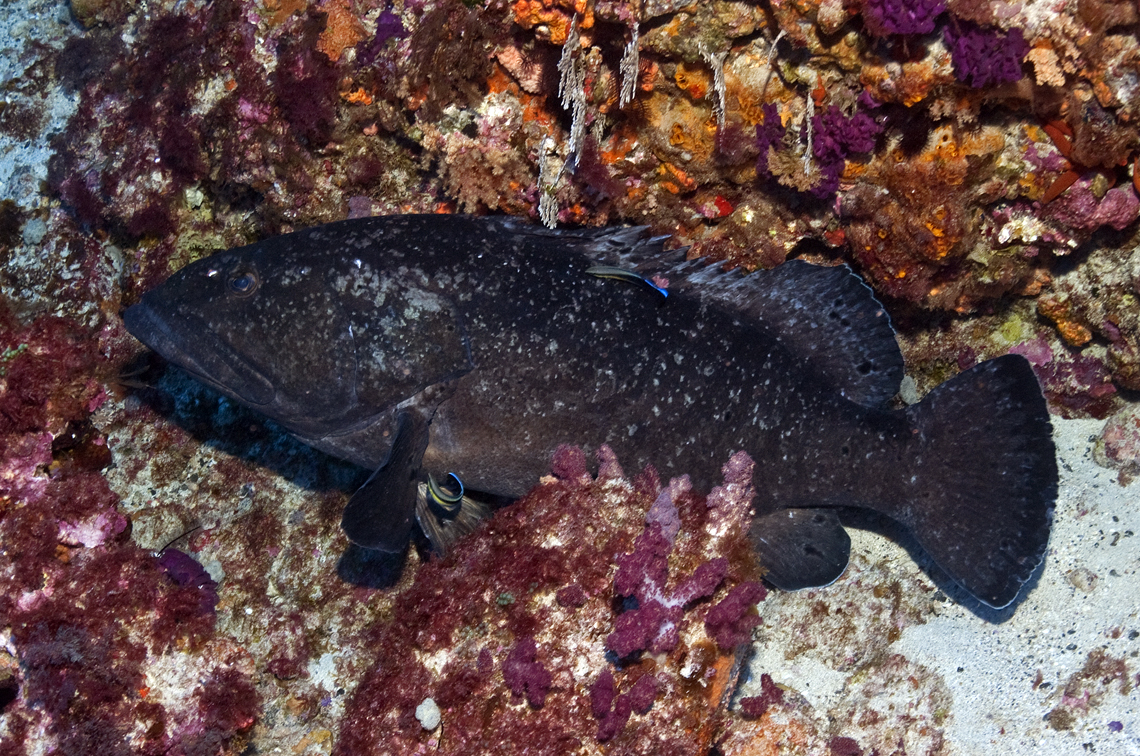
More black rockcod in sanctuary zones
The 2009–11 and 2023 broadscale surveys found significantly greater numbers of black rockcod in ‘no-take’ sanctuary zones than in fished areas. This may be influenced by some sanctuary zones being situated on good black rockcod habitat. At Lord Howe Island, however, the best habitat surveyed (which also had the largest individuals) was in fished areas of the Admiralty Group of islets, so this is not a consistent bias.
The Solitary Islands Marine Park is a stronghold for black rockcod, with the largest and most stable abundances in the past 15 years recorded there. Sites such as the northern end of South Solitary Island, Anemone Bay (North Solitary Island), and Fish Soup (North-West Rock) are in no-take sanctuary zones that provide high levels of protection.
“These no-take areas prevent all forms of fishing,” Dr Harasti says. “The incidental capture and subsequent injuries or mortality from hooking injuries therefore is reduced, increasing the chance of survival in these locations.
Black rockcod is still caught accidently by fishers. Although they must be immediately released, they can die post-release from barotrauma (decompression caused by the rapid rise on a fishing line). Their likelihood of survival is low. According to NSW DPIRD compliance data they also are occasionally illegally taken by fishers.

Future prospects
“There is no indication that black rockcod are becoming more widespread on rocky reefs in northern NSW and Lord Howe Island,” Dr Harasti says. “This is concerning as after 40 years of protection we were hopeful that we would be seeing signs of recovery.
“As the black rockcod is slow growing, long-lived, late to mature and still in low abundances across NSW, the recovery of this species will take time, even if all the threats from incidental fishing pressure were eliminated. They are unlikely to recover to the level of an ‘unthreatened’ population in the decadal-scale future.
“One positive is that our findings suggest the size structure of black rockcod has increased since 2009–2011 at broadscale and key survey sites. The presence of more mature large females is positive for the reproductive potential of overall population.
“Protection from fishing in key locations is likely to be important for the recovery and long-term survival of this species. Given this species is known to display strong site fidelity, the continued protection of sites where black rockcod occur, through the continued implementation of no-take sanctuary zones or other fishing restrictions, will ultimately benefit the species.”
Project recommendations
The project report includes the following recommendations to assist the recovery of black rockcod.
Management actions: The ongoing review of NSW marine park management plans provides an opportunity to consider how marine parks might assist with the recovery of this and other threatened species. Continued and increased spatial protection from incidental fishing and an educational campaign on species identification and how to release incidentally caught black rockcod would be of use to reduce fishing-related mortalities.
Future monitoring: Further monitoring of the 12 key NSW monitoring sites in 2028 and 2029 (at a minimum) is essential to help evaluate the upward trend in black rockcod abundance observed in 2023 and 2024.
Threatened species status evaluation: Given a 15-year dataset now exists for black rockcod populations, a reassessment of its threatened species status in NSW should be undertaken. Data collected in this research can be used by the NSW Fisheries Scientific committee to evaluate which IUCN Red list threatened species category applies (Critically Endangered, Endangered or Vulnerable).
Further information
- Project 3.14 technical report: Assessing changes in black rockcod abundance and size
- Article in the Journal of Fish Biology: Assessing changes in threatened black rockcod Epinephelus daemelii abundance and length over the past 15 years in New South Wales, Australia
